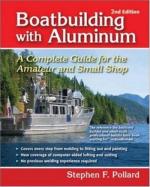|
This section contains 170 words (approx. 1 page at 300 words per page) |
Aluminum, a light metal, comprises about 8% of the earth's crust, ranking as the third-most abundant element after oxygen (47%) and silicon (28%). Virtually all environmental aluminum is present in mineral forms that are almost insoluble in water, and therefore not available for uptake by organisms. Most common among these forms of aluminum are various aluminosilicate minerals, aluminum clays and sesquioxides, and aluminum phosphates.
However, aluminum can also occur as chemical species that are available for biological uptake, sometimes causing toxicity. In general, bio-available aluminum is present in various water-soluble, ionic or organically complexed chemical species. Water-soluble concentrations of aluminum are largest in acidic environments, where toxicity to nonadapted plants and animals can be caused by exposure to Al3+ and Al(OH)2+ ions, and in alkaline environments, where Al(OH)
4 is most prominent. Organically bound, water-soluble forms of aluminum, such as complexes with fulvic or humic acids, are much less toxic than ionic species. Aluminum is often considered to be the most toxic chemical factor in acidic soils and aquatic habitats.
|
This section contains 170 words (approx. 1 page at 300 words per page) |


